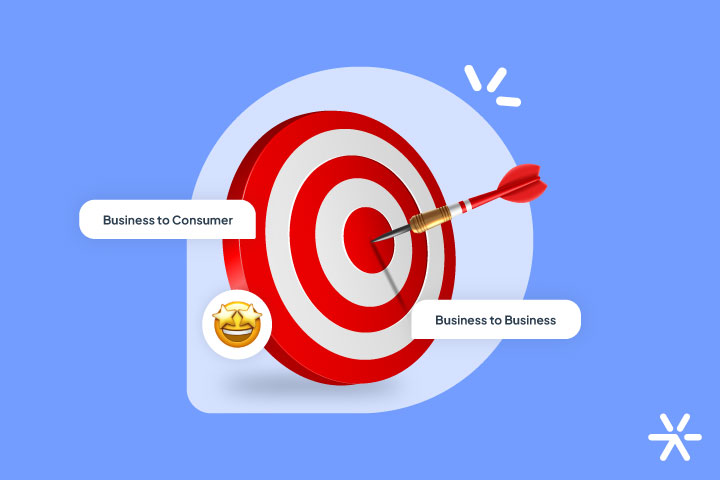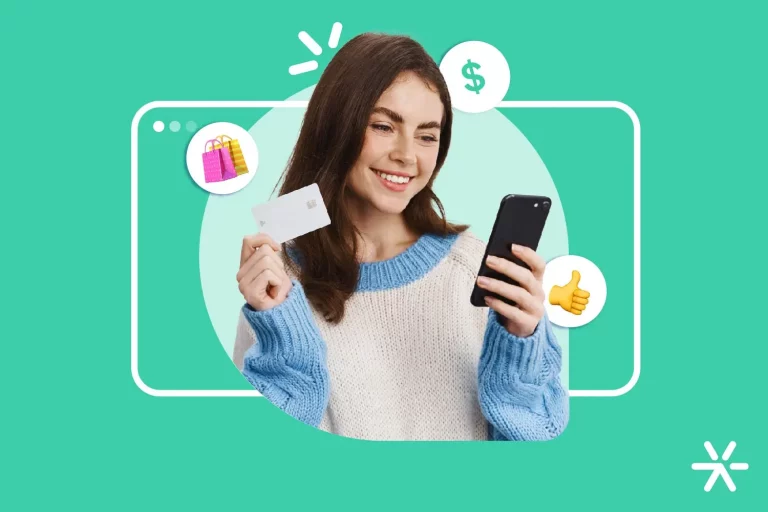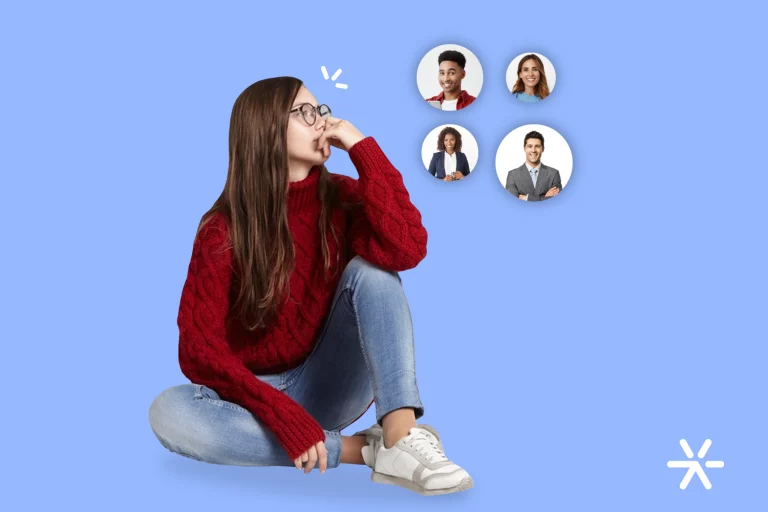13 Differences Between B2B and B2C Sales and How to Optimize Your Strategy
The Differences Between the B2B and B2C Markets Go Beyond Just the Business and Sales Models
In two sectors with such different dynamics, it is also necessary to think about strategies that work for each of them.
Do you want to understand these differences, optimize your sales strategy, and check out examples from each market?
Then keep reading this article we have prepared for you!
What is B2B?

If a brand sells to another company, it fits into the B2B (Business to Business) model.
A B2B buyer is a professional purchasing on behalf of a company, meaning they must align with the company’s needs.
Typically, this type of negotiation is more competitive, and the technical knowledge required to assess quality standards is higher.
🔎 Read also: B2B Prospecting Tool: What It’s For, How to Use It, and Market Examples
What is B2C?
A B2C (Business to Consumer) company, on the other hand, sells directly to the final consumer without intermediaries.
This business model covers retail and its various segments.
What Are the Main Differences Between the B2B and B2C Markets?

Companies are divided into B2B and B2C sectors based on their sales profile and target audience.
Now, let’s explore the key differences between these two business models.
🔎 Read also: Business Marketing: Where to Start? 5 Modern Marketing Tips
Buying Process
Starting with the buying process as a whole, the B2B market dynamic is much more complex, involving multiple steps and decision-makers (we will discuss this in more detail soon!).
The entire purchasing process and decision-making are very different from a final consumer purchase and must be treated accordingly for a successful sale or contract.
While the B2C buying process is characterized by quicker decision-making, payment at the time of purchase or contract, and a shorter relationship between company and consumer, the B2B process involves high-value contracts and bureaucratic processes defined by each buying company.
Decision-Makers and Influencers
As mentioned, the B2B buying process is longer and more complex.
A sale to a final consumer needs to convince only that person and, in some cases, one or two additional decision-makers or influencers.
However, a B2B purchase is rarely approved by just one person. The decision is not individual but rather made by a group acting on behalf of the company.
On average, 11 people are involved in approving a company contract or business solution purchase, and this number can go up to 20 decision-makers and influencers, according to the B2B Buyer Behavior Study by DemandGen.
For this reason, one of the challenges of B2B sales is achieving consensus among all professionals involved in the purchasing decision.
According to research conducted by Harvard Business Review, many suppliers focus on proving they are the best option during the sales process when they should actually be helping decision-makers find the best solution.
Closing Time
Another key difference between B2B and B2C sales is the time it takes from the first contact to the purchase or contract closing.
In B2B, the impact of a poor choice—whether due to an unreliable supplier or a low-quality delivery—is too significant to allow for a quick decision.
Contracts are only signed once the buying company feels completely secure, meaning that impulse buying is not part of this process. Instead, the sales cycle is much longer (taking months or even years) before a prospect becomes a client.
Average Transaction Value
When we talk about B2B sales, we are referring to businesses that usually have higher profit margins and larger average transaction values.
Therefore, standing out in this sector is crucial for the financial success of a company that sells to other brands.
According to a study by the American consulting firm Frost & Sullivan, by 2020, B2B transactions had reached a value of $3 trillion.
Because B2B processes take longer, contracts typically last for extended periods as well.
After all, there is not enough time to go through the purchasing process for every new demand.
This is one of the advantages of B2B sales.
Besides establishing an initial long-term contract, renewals are more likely—provided there is demand and satisfactory delivery.
Payment Methods
In addition to higher contract values, payment methods also differ in the B2B sector.
It is quite common for contracts to involve longer payment terms, or for payment (or part of it) to be made only after product or service delivery.
Recurring sales—purchases made at regular intervals as defined in a contract—are also very common in this sector.
In contrast, B2C purchases are more one-time transactions, with various payment methods available, as well as multiple installment options and discounts to encourage upfront payments.
Regardless, the payment method in B2C is almost always determined and completed at the time of purchase, before product delivery.
Marketing Strategies
When it comes to marketing strategies, there are also significant differences between the sectors.
In general, B2C marketing focuses on lead generation at different stages of the marketing and sales funnel, but with an emphasis on direct sales—especially when dealing with lower-cost products or services with short decision cycles.
Of course, some B2C businesses have more complex processes that require distinct marketing strategies, such as real estate agencies, construction firms, car dealerships, and insurance companies.
On the other hand, in the B2B market, the primary focus is lead generation for direct commercial contact, since much of the buying cycle occurs during interactions with the sales team.
The persuasion arguments must be different, as should the relationship between the two companies.
That said, marketing efforts should not be neglected in the B2B sector! After all, lead generation cannot rely solely on referrals and the commercial team’s efforts.
We cover strategies such as paid media and remarketing, conversational marketing, content marketing, referral marketing, Account-Based Marketing (ABM), branding, virtual events, and many other actions in this complete article on the topic, which you can access here.
Acquisition Channels
In direct-to-consumer sales, the company website is generally the primary conversion channel. However, in B2B sales, this role is typically played by a sales representative.
Therefore, the acquisition channels for B2B and B2C also differ in how they drive leads to their main conversion points.
B2B sales focus on active prospecting and lead acquisition through online and offline methods, particularly at trade shows and events, while B2C sales leverage point-of-sale promotions, advertising campaigns, social media, content marketing, and email marketing.
B2B companies can also explore digital strategies, adapting them to the sector’s unique characteristics.
Sales Team Profile
The profile of sales professionals also differs between B2B and B2C.
Salespeople transitioning between these sectors face a significant learning curve, and for good reason.
B2B salespeople act as moderators between two companies, requiring both technical persuasion skills and strong relationship-building abilities with influencers and decision-makers.
It is crucial for a B2B salesperson to have in-depth knowledge of their solution, as they often function almost like a consultant for the purchasing company.
Meanwhile, B2C salespeople often receive pre-qualified leads from the marketing team and must use different techniques to close deals.
B2C sales rely on urgency, exclusivity, and personalization—factors that do not typically apply to B2B transactions.
Sales Arguments
Emotional vs. Rational Arguments
In general, these are the key factors salespeople must identify when determining which sales arguments to use for persuasion.
Although this is a common pattern, it is important to remember that decisions are ultimately made by people, who are influenced by interpersonal relationships and emotions—even in a business environment.
With higher risks and longer negotiation processes, corporate clients tend to buy only after establishing a strong relationship with the supplier.
Google partnered with CEB’s Marketing Leadership Council to research whether B2B decisions are truly unemotional, as is often assumed.
Types of Content
Understanding who the influencer personas and decision-maker personas are is fundamental to also understanding the behavior of your target audience regarding the research they conduct, regardless of the sector.
There are buyers, whether they are final consumers or professionals, at different stages of purchase maturity—some seek information, others want to learn about the solution, and some are already looking for purchasing options.
In the B2C market, the type of content focuses on branding and reaching large audiences.
Therefore, large-scale channels such as TV, radio, blogs, social media, point-of-sale promotions, and advertising make up the majority of the investment.
For B2B, however, the focus is on producing content to generate qualified leads for the sales sector.
Additionally, it is necessary to produce a significant amount of support content for the sales team, including product demonstrations, case studies, and customer evaluations.
Sales Metrics and KPIs
As we have already mentioned, there are metrics with different interpretations and impacts on each sector, such as closing time and average ticket size.
For a B2C company, a six-month sales cycle can be an eternity and significantly increase the cost of customer acquisition.
For a B2B company, closing a contract in six months can be a tremendous success!
Since the contract value is higher, in some cases, closing one contract per month is enough to ensure the company’s financial health.
Now imagine a B2C handbag company that only makes one sale per month?
It would have to shut down.
Therefore, sales metrics, KPIs, and especially the goals set for each of them vary greatly from company to company.
If you want to deepen your knowledge on the topic, we recommend these two complementary readings:
- 8 Sales and Marketing KPIs That Leaders Want to See on Your Dashboard
- 3 Vanity Metrics That Are Not Taking Your Company Anywhere

Customer Retention
Due to the longer sales cycle we mentioned earlier, customer retention tends to be more straightforward in the B2B sector.
First, because many contracts are already signed with recurring business in mind, and second, because after the entire effort and time spent on the purchasing decision, decision-makers tend to stick with the same supplier—unless they are dissatisfied with the deliveries.
In the B2C sector, due to greater market supply and competition, the challenge of retaining customers is higher and does not depend solely on good service after a purchase.
Even if a customer is satisfied, they may still want to try other brands and solutions.
Post-Sales Support
Due to high customer retention, recurring business, and complex sales processes, B2B companies also require a different post-sales support approach.
Often, technical issues and closer follow-ups are needed, involving much more than just the sales team.
Support areas, Customer Success, and Customer Experience are important in B2C, but in B2B, they are essential.
Summary – Main Differences Between B2B and B2C Sales
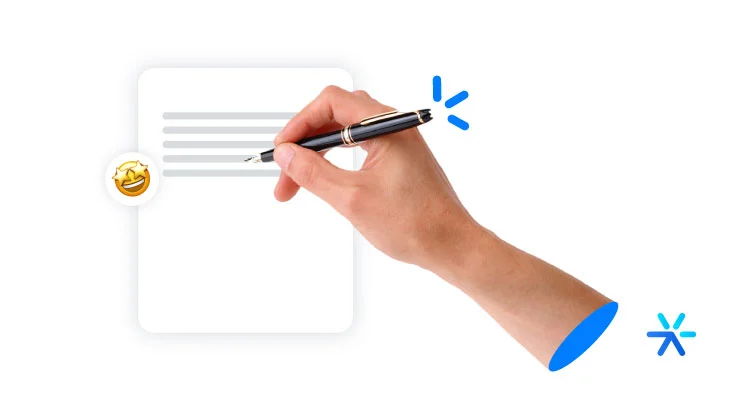
Wow! There really are many differences between these sectors.
To simplify, here is a summary of what we covered in this article:
It’s worth noting that this is the standard, but there are companies in both sectors that deviate from it, okay?
Best Sales and Marketing Practices for B2C Businesses
If you own a B2C business, you know that marketing and sales work together for your success.
However, standing out in a market has never been as challenging as it is now, with increased competition and reduced consumer attention.
That’s why we’ve compiled some essential practices for the success of your B2C business—check them out!
Knowing Your Audience in Depth
Understanding your target audience is one of the best sales and marketing practices for B2C businesses.
When you grasp your customers’ needs and desires, your marketing campaigns become more targeted and personalized, helping you stand out from competitors. As a result, they will be better received by your audience.
To learn more about your audience, you can conduct market research, analyze buying behavior data, and use analytical tools.
🔎 Read also: ICP, Persona, and Target Audience: Don’t Confuse These 3 Concepts
Investing in Consumer Experience
Consumer experience, whether online or in a physical store, is a key factor for B2C sales success.
By investing in a positive experience, you strengthen customer loyalty, encourage repeat purchases, and benefit from word-of-mouth marketing.
A good experience includes various factors, such as:
- A user-friendly and responsive website;
- A seamless and error-free purchase experience;
- Efficient customer service;
- Fast and affordable shipping options.
Focusing on Customer Satisfaction
Maintaining customer satisfaction should be a priority for B2C businesses, especially if you want them to return and bring in more customers.
By collecting customer feedback, you can identify areas where processes and products need improvement and enhance the overall customer experience.
Leveraging Local SEO
Search engine optimization for local searches, such as Google My Business, is one of the best marketing practices for B2C businesses.
This involves creating optimized content with specific keywords related to your location, helping drive traffic to your site and potentially increasing sales.
Another essential action is ensuring updated location and business hours information on your website and social media platforms.
Running Promotions
Who doesn’t love—and even wait for—promotions?
Running promotions is a great way to encourage purchases from potential and existing customers.
We’re talking about discounts for new customers, seasonal promotions, and even loyalty programs that reward customers.
Keep in mind that promotions should be tailored to meet your target audience’s needs and desires. It’s also important to create a sense of urgency to encourage immediate purchases. However, avoid overuse—offer promotions that truly add value to your customers.
Best Sales and Marketing Practices for B2B Businesses
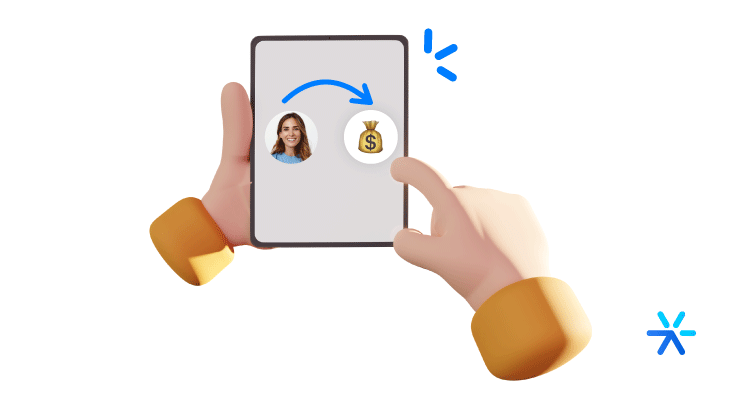
If you run a B2B business, you know that closing a sale is even more challenging than in the B2C market. Decision-makers must consider factors that do not exist in B2C and operate in an even more competitive market.
With this in mind, let’s explore the best sales and marketing practices for B2B businesses to make your daily operations easier and close more deals. Check them out!
Integrating Tools
Tool integration is one of the best sales practices to invest in today.
Due to its longer and more complex sales cycle, B2B customer acquisition involves many details, making tracking essential.
By integrating tools, you align your sales and marketing processes while optimizing and automating time-consuming daily tasks.
For example, by integrating a sales CRM with a marketing automation platform, you can manage leads more effectively, personalize campaigns, and increase conversion rates.
Additionally, tool integration ensures that lead and customer information is updated and organized in one place.
Working on Lead Generation
Lead generation should be a top priority for any B2B business, even though many rely solely on referrals, partnerships, and networking.
With a strong lead generation strategy, you:
- Expand your customer base;
- Improve sales effectiveness by working with more qualified leads;
- Increase return on investment;
- Build long-term relationships by engaging with users from the start;
- Gather valuable market insights, as your audience reflects it.
However, for this strategy to succeed, it is crucial to invest in creating high-quality, relevant content and leveraging paid media.
Additionally, having a dedicated lead qualification team ensures that only those with the highest conversion potential are passed on to sales representatives.
🔎 Learn more: How to Generate B2B Leads? The Latest Strategies
Investing in Long-Term Relationship Building
To conclude, building long-term relationships is another key point in your marketing and sales practices.
This means maintaining constant contact with your customers, always sending useful and relevant information, and offering continuous support.
Always remember to listen to your customers to understand their needs so that you can offer personalized solutions and maintain a trusted relationship.
By applying this practice, not only will you retain a loyal customer who will continuously recommend your company, but you will also be able to implement upselling—a strategy to increase the number of products your customer buys from you, ultimately increasing your average ticket size.
Meet Leadster – A Lead Generation Platform for B2B and B2C Sales

If you’re looking for a way to increase the volume and quality of your leads, Conversational Marketing is something you should consider.
Aligned with digital trends that we will discuss shortly, this type of marketing provides tools like chatbots and virtual assistants that accelerate the inquiry process, personalize conversations, and can be activated at any time.
Leadster offers this type of tool, primarily focused on the B2B segment, but it also works very well for complex B2C sales.
Here are two case studies showing how our platform was the ideal solution for lead generation and qualification in sales.
B2B Case Study – RevendaMais
RevendaMais is a management system for dealerships in Brazil. At the beginning of 2020, the company received a considerable number of visitors to its website, but only a small percentage (just 1.39%) were converting through the site’s contact form.
It is important to highlight that the company also had a WhatsApp contact button, which was bringing in many unqualified leads.
That’s when RevendaMais’ marketing analyst, Rafael, discovered the Conversational Marketing strategy and came across Leadster.
He saw Leadster as an opportunity to increase the website’s conversion rate without having to increase the company’s existing paid media investment.
With a simple yet significant change in how they approached website visitors, RevendaMais doubled its website’s conversion rate, generating R$250,000 in new contracts.
The new strategy with Leadster included:
- A highly customizable marketing and sales chatbot with instant responses;
- Personalized calls to action based on customer interest;
- Tailored flows according to the lead’s origin;
- Targeted qualification questions;
- Analysis of abandonment reasons;
- Investment in A/B testing to determine the best calls to action.
B2C Case Study – Pós PUCPR Digital
Now let’s talk about the case of the educational institution Pós PUCPR Digital, which, right after launching a new course, faced the challenges of the pandemic, economic crisis, and social distancing.
Instead of attracting more students, the institution saw its students leaving the classrooms. To adapt to the situation, they developed an innovative online course.
However, another challenge soon emerged: too many visitors were coming in with questions, and there weren’t enough sales representatives to handle inquiries and lead qualification. The team simply couldn’t keep up.
That’s when Pós PUCPR Digital discovered Leadster and replaced its old WhatsApp button with Leadster’s conversational marketing tool.
Immediately, the main problem was solved through the proactive and instant engagement of Leadster’s chatbots.
To further improve the process, all qualified leads from the chatbot were directed to WhatsApp, where they could be added to a relationship nurturing workflow.
The results were impressive:
- The conversion rate increased from 3.9% to 9.2%;
- Lead generation skyrocketed from 1,100 leads/month to 2,595 leads/month;
- The leads were highly qualified.
Enjoyed This Article About B2B vs. B2C Sales Differences and Want to Go Further?!
Then start your 14-day free trial of Leadster now! Who knows, you might be our next success story—just like RevendaMais and Pós PUCPR Digital. 🙃


